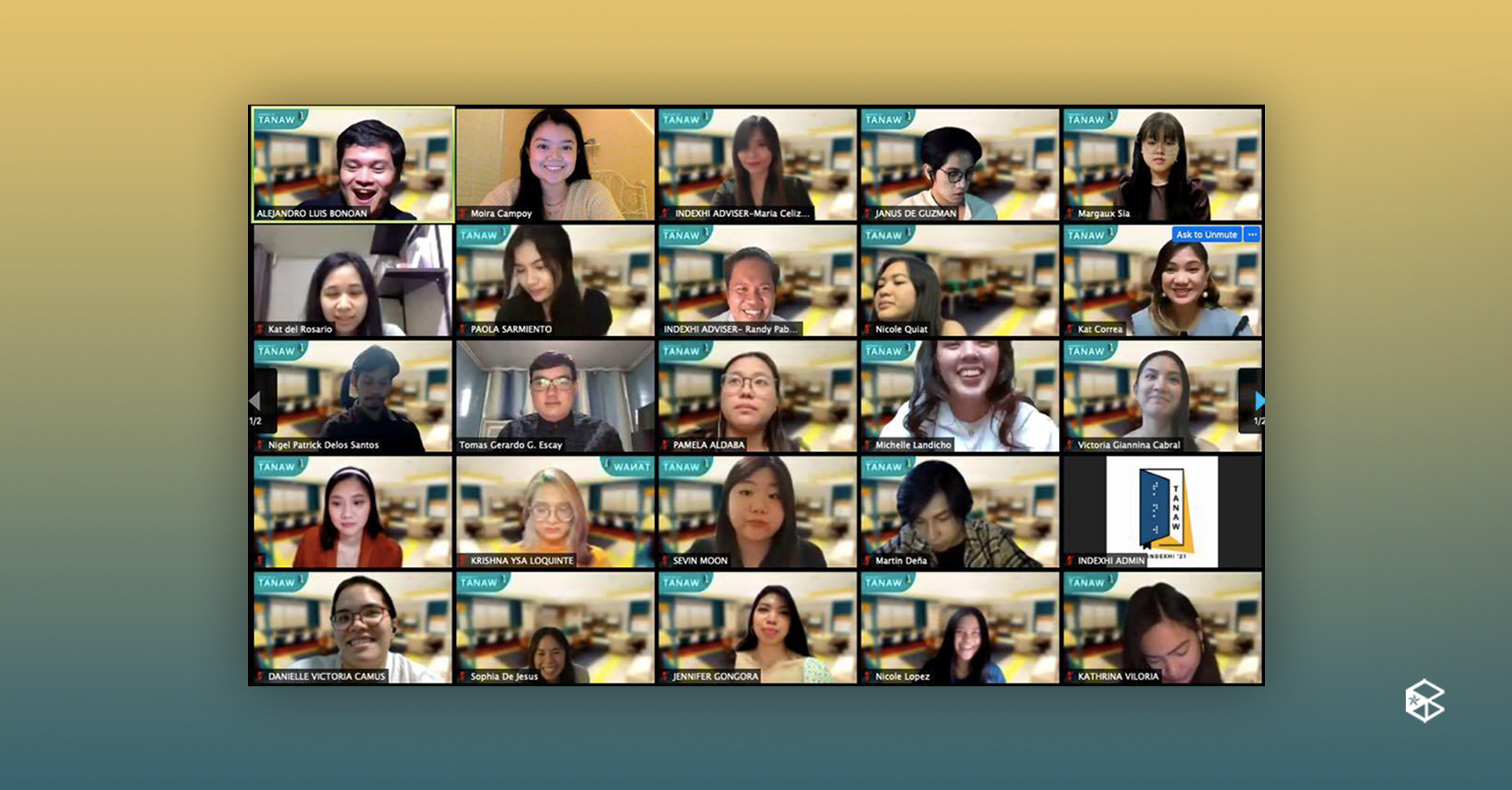Beyond Braille-lined bookshelves and seizing the ethos behind human-centered design, the College’s graduating batch of 24 Bachelor of Interior Design students in the INDEXHI 2021 class delivered “TANAW: Breaking Barriers for Blind and Visually Impaired Students through Multisensory and Experiential Design.”
As the term comes to a close, the virtual exhibit was an apt platform of the students’ renovation plans for the Philippine National School for the Blind’s (PNSB) E-Learning Resource Center in Pasay City. This exhibit was created to better foster growth and development among students and shape the quality of education itself through empathetic Interior Design.
Under the guidance of project advisers IDr. Celiza Sim and IDr. Randy Pabona since its first exhibit meeting last Jan. 12 until its meeting with the beneficiary last Feb. 9—the exhibit promised success.
Knowing full well the roadblocks that these Interior Design students bumped into in such trying times, the distinguished guest speakers were abound with praises for this graduating and pioneering batch. This was evident from the opening remarks of Vice Chancellor for Academics Geronimo Ulayao and Fashion Design and Merchandising Program Chairperson Christine Benet; and even the welcoming remarks of the Interior Design Program Chairperson IDr. Katherine Correa.
Breaking the barriers for inclusivity
In an interview with The Benildean, Project Head and ID 115 BS-IND student Raven Landicho shared what the project aimed to achieve, saying, “Our goal is to promote inclusive learning and designing without barriers. We hope to make an impact that will remove the stigma of interior design as an exclusive status symbol or solely as a visual decorative aesthetic.”
The efficiency and effectiveness of any given space teeters on an interior designer’s vision and decisiveness. Rather than stylists per se, Landicho described herself and her batchmates as builders whose outputs focus on user-centered problem solving, rather than reflecting the penchant for self-expression that most artists possess.
“Interior design is art and science at the same time. It's technical design, [given the] logical and technical skills to create spaces from layouting partition walls, floors, ceilings, built-ins, lighting, and electrical utilities to furniture. We are taught how to visualize spaces down to the very last nail,” Landicho said.
From the more than functional, conceptual marriage between educational technology and accessibility for Persons with Disabilities (PWD), transcending the traditional limitations of bare spaces will surely be done so with less friction on the part of students. “Not only do we build and enhance spaces, but we also create meaningful experiences for long term sustainability,” Landicho added.
In spite of online modality during these times, this particular INDEXHI batch had to transcend and bend over backwards to pull off this formidable yet worthwhile task. It was a wholly new experience for the Interior Design department to have a virtual construction of the space in the absence of site visits, wide scale fundraising events, and face-to-face meetings.
Moreover, Landicho was grateful “to have worked with her fellow batchmates who poured a lot of their efforts in making this project successful.” Sacrifices such as extra time offs during the weekends and the tremendous efforts inviting people to join fundraising events, they wouldn’t be able to reach the finish line if it weren’t for their goal, which is “to provide a space that would benefit the educational experiences of PNSB’s community.”
A glimpse moving forward
To revisit and see how bright a trail can blaze with the graduating BS-IND students carrying the torch of the Benildean brand of extraordinariness, you can still take a gander at “TANAW” through INDEXHI 2021’s Facebook page. The design process, 3D renderings and more were covered within the exhibit’s first phase, however, things are not quite over yet.
The second phase, being the construction of the design itself, will commence within the third week of April. Hence, one will be able to tune into the progress through their social media accounts.
Beyond this term, the Logistics and Finance committee, the graduating batch of students, and advisers will continue to coordinate closely with the beneficiary community and contractors to ensure the project’s tangible completion, forecasted by the end of May at the earliest or the first week of June at the latest. Circumstances will still be taken into consideration, such as if the pandemic ceases to reel in delays.
This article was originally published on April 16, 2021 at Facebook. Click here to view the Facebook post.


